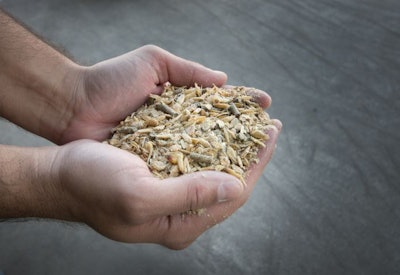
Government officials want to salvage poor cereal or pulse crops for feed use
The governments of Canada and Alberta, through the Canadian Agricultural Partnership, are adjusting the crop insurance program.
Low Yield Allowance is a standard part of the production insurance program, and is meant for situations of extreme heat and severe drought. Alberta is doubling the low yield threshold to allow for additional cereal or pulse crops to be salvaged for livestock feed. For example, the barley crop threshold will be increased from 150 to 300 kg per acre.
Since mid-June, there has been a significant deterioration of crops across the province. Current weather conditions are not improving, and industry expects to see further deterioration in crops.
Together with the federal government, Alberta is making an adjustment to crop insurance that will allow farmers to put more poor quality crops towards livestock feed, helping ease feed shortages for livestock during the current drought.
This adjustment encourages producers to act swiftly to salvage crops for livestock feed rather than watch their fields deteriorate further, and risk harvesting nothing. As these crops would otherwise be covered by crop insurance, there will likely be minimal additional payments resulting from this decision.
“Alberta’s hardworking farmers and ranchers have been hit with dry conditions that threaten their livelihoods. We will do everything we can to help Alberta’s agriculture industry make the best of a terrible situation. We’ve heard industry’s call for help, and this change will help farmers and ensure some good can come out of these crops,” said Devin Dreeshen, minister of Alberta Agriculture and Forestry.
Under the federal-provincial cost-shared Canadian Agricultural Partnership, there are a number of business risk management programs available through Agriculture Financial Services Corporation (AFSC) to help Alberta producers manage significant risks that threaten the viability of their farms, including crop insurance.
Alberta’s AFSC has a total of 119 active adjustment team members following the addition of 21 new members in December 2020 and April 2021. The government has advised crop adjusters to be flexible and complete early assessments with affected crop and hay land; for example, offering alternative use of crops to address forecasted feed shortages in our livestock industry.
Last week, Alberta, along with Saskatchewan, Manitoba and Ontario, received verbal commitment from the federal government that a joint AgriRecovery program will be initiated to support producers affected by drought conditions prior to a federal election. Assessments are currently underway in these provinces.
Alberta announced a 20 percent reduction in premium costs for crop, pasture and forage insurance earlier this year which protects against weather-related production loss. As a result:
- Almost 400 additional farmers and ranchers enrolled in crop, pasture and forage insurance.
- Almost 1,400 farmers and ranchers increased their level of crop, pasture and forage insurance coverage.
- Almost 230 clients re-enrolled in crop, pasture and forage insurance after canceling their subscriptions in 2020 or prior years.
The adjustments to crop insurance add to the steps already taken by the government of Alberta to ensure farmers are supported during this difficult time. Other steps include:
- Formally requesting the federal government initiate an AgriRecovery assessment.
- Asking the federal government to ensure all significantly affected municipalities are included as eligible in the designation for the federal Livestock Tax Deferral provision. This would allow farmers who sell part of their breeding herd due to drought in a prescribed drought region to defer a portion of sale proceeds to the following year.
- Increasing the percentage paid on interim payments under AgriStability.












